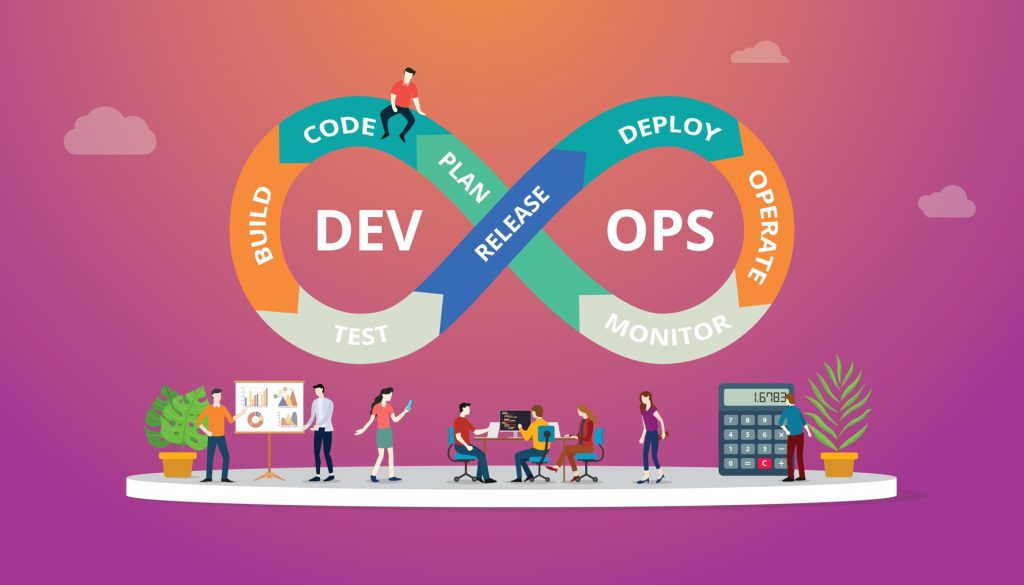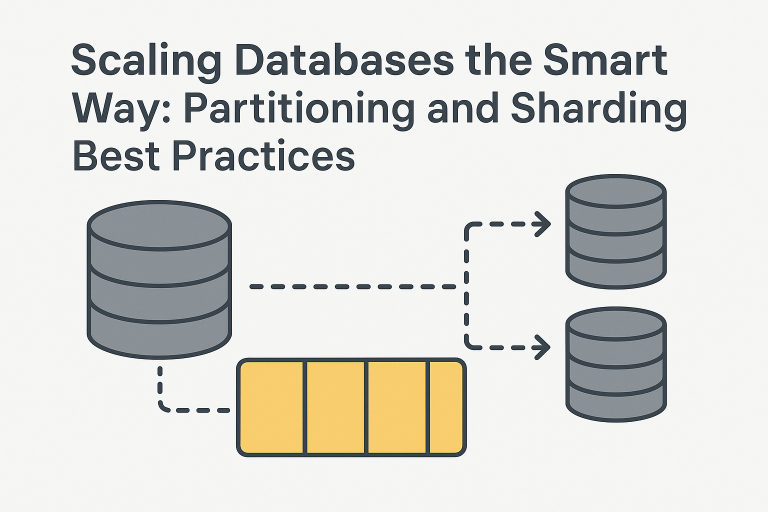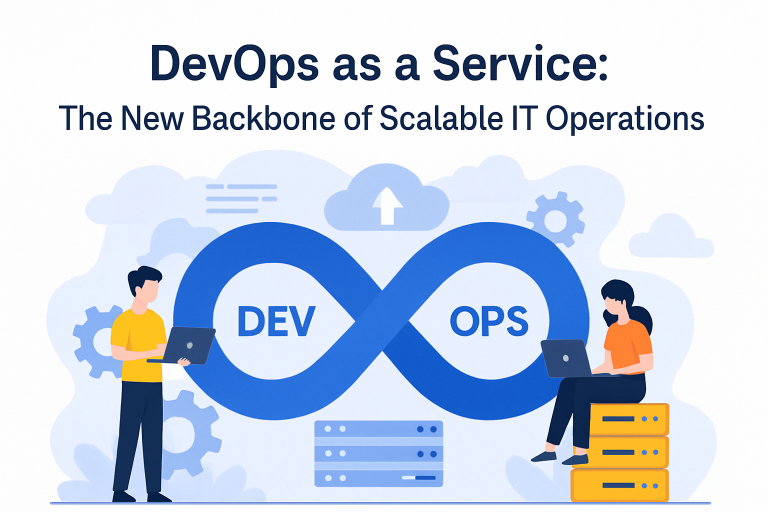
Software development has changed much over the past few years with the DevOps practice and automation services. As organizations strive for greater efficiency and agility, the integration of automation within the DevOps framework has become essential. This blog will delve into the intricate evolution of DevOps, highlighting how automation services are reshaping the software development lifecycle. This blog aims to explore this evolution in detail, focusing on how automation is transforming the software development lifecycle and how devops and automation as a service is becoming essential for organizations looking to streamline their operations.
Early Days of Software Development
In the old days of software development, teams operated in silos. Developers produced code, while operations managed infrastructure and deployment. More often than not, inefficiencies and miscommunication came with it. Resulting bugs caused expensive downtimes and awful user experiences. Moreover, this lack of collaboration meant a slow, cumbersome development process that made organizations struggle to keep up with market demands.
With the complexity of software products rising, a more collaborative approach was direly needed. The competition and the level of expectations from customers could not leave this under-structured teamway organization in any corner. That is how the birth of DevOps took place.
Birth of DevOps
The term “DevOps” emerged around 2009 as a response to these challenges. It basically represented a cultural shift-encouraging collaboration from the development and operations teams involved. This shift was also aimed at breaking silos and creating a culture with shared responsibility for the entire cycle of software development.
In the initial implementations, DevOps was sometimes manual and non-consistent. Teams began to adopt more practices like Agile methodologies focusing on iterative development and direct customer collaboration. However, most organizations still could not reach the speed and effectiveness they desired, and many began to realize that in order to unlock the whole potential of DevOps, automation had to be established.
Moving from Manual to Automated Processes
As DevOps principles gained traction, it soon became clear that manual processes couldn’t meet the speed and reliability modern software development demands. Consequently, automation tools stepped in to handle repetitive tasks such as testing, integration, and deployment, allowing teams to concentrate on more strategic work. Ultimately, this shift has become a cornerstone of DevOps, significantly boosting productivity and efficiency while enabling teams to respond swiftly to evolving market demands.
Key Automation Tools in the DevOps Toolbox
A variety of tools have been essential in driving automation within DevOps. Here are some of the most influential:
1. Continuous Integration/Continuous Deployment (CI/CD) Tools:
Tools such as Jenkins, GitLab CI, and CircleCI support automated testing and deployment, allowing teams to release code more often and with greater reliability. By merging code changes into a common repository and automatically testing them, teams can identify bugs early and produce high-quality software quickly.
Here are some key points on how CI/CD tools assist in automation:
Automated Testing: CI/CD tools run tests automatically whenever code is integrated, helping to identify bugs early in the development cycle.
Frequent Releases: They support more frequent and reliable code deployments, enabling teams to quickly adapt to market needs.
Rollback Capabilities: In the event of deployment failures, quick rollbacks to stable versions can be performed, reducing downtime.
Consistent Environments: Automated environment setups minimize discrepancies, ensuring uniformity across development, testing, and production environments.
Fast Feedback Loops: CI/CD tools promote rapid feedback between development and operations, streamlining processes and continuously enhancing software quality.
2. Infrastructure as Code (IaC):
Tools like Terraform and Ansible enable teams to automate the setup and management of their infrastructure. This method promotes consistency and minimizes the chances of human error. By using Infrastructure as Code (IaC), teams can manage their infrastructure versions alongside their code, simplifying the process of tracking changes and rolling back when needed.
3. Monitoring and Logging:
Tools like Prometheus and the ELK Stack streamline the monitoring of applications and infrastructure, offering real-time insights and alerts. This proactive approach enables teams to tackle issues before they impact users, leading to a more seamless experience and reduced downtime.
4. Collaboration Tools:
Platforms such as Slack and Microsoft Teams enhance communication among team members, promoting real-time collaboration. These tools seamlessly integrate with CI/CD pipelines, enabling teams to get updates on builds and deployments directly within their chat environment.
Role of Automation in DevOps
The evolution of DevOps has led to a new paradigm where automation enhances every aspect of the software development lifecycle.
1. Increased Speed and Efficiency
The advancement of DevOps automation empowers teams to release software more rapidly than ever before. With automated testing and deployment processes, organizations can significantly shorten their time-to-market. This agility is vital in today’s competitive environment, where being the first to launch can yield a considerable advantage.
2. Improved Quality and Reliability
Automation minimizes the likelihood of human error, resulting in higher quality software. Continuous testing ensures that bugs are identified early in the development cycle, reducing their impact on end-users. Additionally, automated rollbacks can swiftly revert to a stable version in the event of deployment failures, boosting reliability and minimizing downtime.
3. Scalability and Flexibility
As companies expand, their software requirements become increasingly intricate. Automation allows teams to scale their processes effectively, enabling them to manage larger codebases and more frequent releases. Moreover, the adaptability of automation tools means they can respond to evolving business needs without extensive rework.
4. Enhanced Collaboration and Communication
Automation tools facilitate better collaboration between development and operations teams. For instance, automated testing guarantees that code changes adhere to quality standards prior to deployment, while real-time monitoring offers insights into application performance. This shared visibility cultivates a culture of trust and teamwork, dismantling the barriers that once separated these teams.
Automation as a Service in DevOps
Rise of automation as a service has significantly advanced the DevOps landscape, providing organizations with flexible and scalable options. By utilizing automation as a service, companies can delegate the management of automation tools to expert providers, freeing their teams to concentrate on essential business activities. This approach not only lowers overhead expenses but also allows organizations to utilize the latest automation technologies without making substantial infrastructure investments.
Conclusion
The evolution of DevOps, especially through automation, is transforming modern software development. As companies continue to adopt these changes, they can look forward to better collaboration, quicker releases, improved quality, and greater scalability. By recognizing and utilizing the advantages of DevOps automation, businesses can set themselves up for success in a constantly changing digital environment.
Looking ahead, it’s crucial for organizations to keep up with the latest trends and tools in automation, adjusting their strategies to stay competitive. The journey of DevOps automation is ongoing, and those who invest in it, along with utilizing IT consulting services, will certainly enjoy the rewards in terms of efficiency, innovation, and enhanced software delivery.






